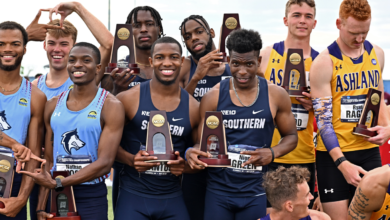Unraveling the Enigma of Nutrition Labels and Facts

Embarking on a journey of health-conscious eating requires a keen understanding of the intricate information presented on nutrition labels. In this comprehensive guide, we’ll unravel the enigma of nutrition labels and facts, breaking down complex information into insightful bullet points. Get ready to navigate the aisles of the supermarket with confidence, armed with the knowledge to make informed choices that align with your well-being.
1. Serving Sizes and Portions:
- Portion Reality: Understand that serving sizes on labels may differ from your actual consumption. Compare these sizes to your typical portion to make accurate assessments of nutritional content.
- Caloric Awareness: Be mindful of the calories per serving, especially if you tend to consume more than the suggested portion.
2. Caloric Breakdown:
- Macronutrient Overview: Examine the distribution of macronutrients—proteins, fats, and carbohydrates—in each serving to gauge the nutritional composition of the food.
- Balance Consideration: Strive for a balanced distribution of macronutrients, with an eye on your overall dietary goals.
3. Deciphering Ingredient Lists:
- Ingredient Hierarchy: Ingredients are listed in descending order of quantity. The first few ingredients hold the most significant weight in the product.
- Recognizing Additives: Identify artificial additives, preservatives, and sweeteners. Opt for products with fewer and recognizable ingredients for a more wholesome choice.
4. Understanding % Daily Value (%DV):
- Benchmark for Nutrients: %DV indicates how a serving of the food contributes to your daily nutrient requirements based on a 2,000-calorie diet.
- Utilizing %DV: Use %DV to quickly assess whether a particular nutrient is high or low in a specific food item.
5. Nutrient Content Claims:
- Low vs. High: Understand terms like “low,” “reduced,” and “high” to gauge nutrient content. For instance, a “low-fat” claim means the product contains 3 grams or less of fat per serving.
- Health Claims: Be cautious with health claims, ensuring they are substantiated. Some terms like “natural” are not regulated, while others, like “organic,” undergo strict certification processes.
6. Sugar Awareness:
- Natural vs. Added Sugars: Distinguish between natural sugars (in fruits, for example) and added sugars. Added sugars contribute to caloric intake without providing additional nutritional value.
- Hidden Sugars: Check for alternative names for added sugars, such as sucrose, high fructose corn syrup, or agave nectar.
7. Sodium Scrutiny:
- Daily Sodium Limit: Understand your daily sodium limit and evaluate whether a product aligns with your dietary goals.
- Hidden Sodium: Be vigilant about hidden sodium in processed foods, as excessive intake can contribute to high blood pressure and other health issues.
8. Allergen Warnings:
- Common Allergens: Pay attention to allergen warnings, especially if you have sensitivities or allergies. Ingredients like nuts, soy, and dairy are frequently flagged.
- Cross-Contamination: Recognize the risk of cross-contamination if allergens are processed in the same facility, even if not directly included in the product.
9. Whole vs. Processed Foods:
- Ingredient Purity: Whole foods generally have shorter ingredient lists with recognizable items. Processed foods may contain additives and preservatives.
- Nutrient Density: Choose whole, nutrient-dense foods over highly processed alternatives for a richer nutritional profile.
10. Customizing Labels for Your Goals:
- Personalized Nutrition: Tailor your interpretation of labels to your specific health goals. Athletes may focus on protein content, while those watching calorie intake may prioritize serving sizes.
- Smart Snacking: Evaluate snack labels for nutrient density and portion control to make informed choices between meals.
Bonus Tips: Smart Shopping Strategies:
- Shop the Perimeter: Whole foods like fruits, vegetables, meats, and dairy are typically found on the outer aisles of the supermarket. Focus your shopping there for healthier options.
- Compare Similar Products: Assess the nutritional content of similar products to make the most nutritious choice.
Conclusion:
Unraveling the enigma of nutrition labels empowers you to make informed choices that align with your health goals. By breaking down the information into digestible bullet points, you’re equipped to navigate the complexities of the supermarket with confidence. Whether you’re seeking nutrient-dense options, managing specific dietary requirements, or making mindful choices, decoding nutrition labels becomes a valuable skill on your journey to a healthier lifestyle. May this guide be your compass as you unravel the nutritional enigma and pave the way for informed and health-conscious eating.




